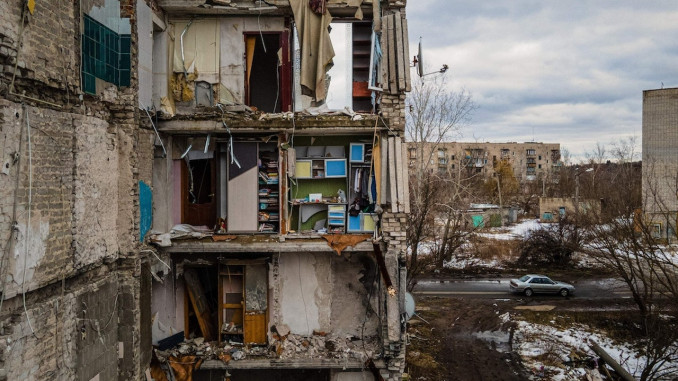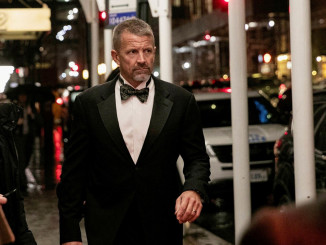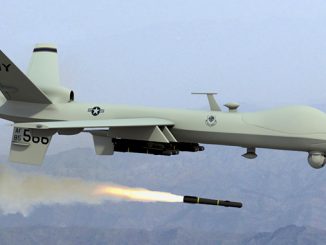
It’s been a year since Russia launched its invasion and brutal war on Ukraine on February 24, 2022. Today, not only does this invasion seem far from over, but the conflict continues to destabilize the entire region, and remains dangerously close to expanding into a wider war between Russia and its allies on one side, and the U.S and NATO on the other.
Devastation from a year of war
The destruction and loss of life in the war has been horrendous. Reported death tolls vary, but most sources estimate around 8,000 to 10,000 Ukrainian civilians have been killed, with many more wounded. U.S. and Western European sources claim around 100,000 Ukrainian troops have been killed or wounded, and around 200,000 Russian troops have been killed or wounded.
According to the U.N. Refugee Agency, 8.1 million Ukrainians have fled the country since the invasion, with about 5.2 million fleeing to 40 European and Central Asian countries, including nearly 1.6 million to Poland, over 880,000 to Germany, and nearly 2.9 million to Russia. An additional 5.4 million Ukrainians have been driven from their homes but have stayed inside Ukraine, and around 17.6 million people in Ukraine are in desperate need of humanitarian aid, lacking necessities like shelter, medicine, food, water, power, and heating.
Ukraine and the right of self-determination
The Russian invasion of Ukraine was an act of unmistakable imperialist aggression against the Ukrainian people’s right to self-determination. For Ukrainians, this remains a war of national self-defense. The Putin regime openly denies Ukraine’s national independence, and is trying to annex part or much of Ukraine, destroying vital infrastructure and entire cities. The Ukrainian people have the right to defend themselves against Russia’s brutal aggression. They have the right to decide their own fate and to arm themselves to defend against this invasion.
The U.S. is not on the side of the Ukrainian people
Despite repeated claims from the U.S. government about defending the Ukrainian people, this is not the motivation for its involvement in this war. The U.S. and its NATO allies have demonstrated their interests in the region over the past decades. Ukraine’s strategic location bordering Russia, with major ports on the Black Sea as well as its fertile agricultural lands, mineral deposits and significant industries, positions it between the U.S. and Western Europe on one side and Russia on the other.
For decades the U.S., along with Western Europe, has helped saddle Ukraine with over $129 billion dollars in debt, helping to make Ukraine the poorest country in Europe. And the debt has continued to increase during the war, as the U.S. has opposed any sort of debt cancellation.
Since the war began, the U.S. has sent about $50 billion in direct military aid to Ukraine. But this money includes direct handouts from the U.S. government to U.S. military contractors. In addition, the U.S. has sent about $26 billion dollars in direct financial aid, which includes loans that add to Ukraine’s debt. And much of that financial aid also winds its way back to U.S. weapons manufacturers, as the money is used to purchase weapons from other NATO countries, whose arsenals are often partially supplied by the U.S. — and those arsenals will now have to be replenished.
Last week Biden visited Kyiv, and in his speech he again said that the U.S. was going to be with Ukraine “for as long as it takes.” But this has less to do with the interests of the Ukrainian people, and more to do with weakening Russia while strengthening the military power and scale of NATO. “Being with Ukraine” means seizing the opportunity of Russia’s invasion to fight a proxy war against Russia, supplying Ukraine with weapons and using Ukrainian soldiers as cannon fodder. And it also means using this conflict to increase the military capabilities of NATO countries, many of which have swelled their military budgets.
The actions of the U.S. should come as no surprise. As the world’s dominant power, it has flaunted its blatant disregard for the rights of people to self-determination, demonstrated over the past several decades by the brutal wars waged on the people of Iraq and Afghanistan, which killed and displaced millions of people. These wars were not exceptions. More recently the U.S. has carried out repeated assaults in Syria, Libya, Somalia, Yemen and elsewhere. The list of U.S. wars and CIA-backed coups against democratically-elected governments throughout the 20th century is a long one. The U.S., which remains the world’s largest arms dealer, has the largest military budget on Earth, with over 750 military bases in 80 other countries, and spends more than most other countries combined. The U.S. has no concern for the sovereignty of other countries or the rights of people in other nations.
Brinksmanship Between U.S. and Russia
Biden’s proclamation that the U.S. and NATO will back Ukraine for “as long as it takes” continues to increase the risk that this conflict could escalate to involve the U.S. and NATO more directly. The Biden administration has pledged itself to never back down because the power and influence of U.S. imperialism and NATO hangs on whether they can defeat Russia in this drawn-out conflict. A victory for Russia could now only be seen as a major defeat and weakness for U.S. imperialism and NATO.
In Biden’s latest visit to Europe, he also discussed increasing the number of U.S. troops in Poland, which borders Ukraine to the west. This would be in addition to the 11,000 U.S. troops that are already stationed at the permanent military base newly established in Poland last year. At the same time, Finland and Sweden are on the cusp of joining NATO and expanding their military capabilities as well. It doesn’t matter whether these moves are presented merely as efforts to deter Russia. The reality is that they increase the risk of the conflict growing, and pave the way for greater conflicts in the future.
At the same time, Putin, too, promises victory at all costs, with larger troop deployments, and an increase in the destruction of Ukraine. Recently Russia pulled out of the “New START” nuclear treaty, which limits the number of nuclear weapons the U.S. and Russia are allowed to have ready for immediate use. This follows the U.S. pulling out of similar nuclear treaties during the Trump administration. These nuclear treaties, however, offered little protection since the number of nuclear weapons that the U.S. and Russia have is already enough to destroy life on this planet many times over. But Putin’s promises of victory have created a situation where he is presenting winning this war as an existential question for Russia (or at least for his regime).
This brinksmanship between U.S. and Russian imperialism means both countries are willing to risk an escalation of this conflict into an even more massive war. So far, the growing rivalry between China and the U.S. has remained outside of this conflict. But that, too, can change as the fighting continues and as China continues to support Russia economically through increased trade of primarily oil and gas.
A way forward?
As this conflict heads into its second year, we must continue to support unconditionally the Ukrainian people’s right to self-determination in their fight against the Russian invasion.
But the U.S, NATO, and the Zelensky regime don’t support the full self-determination of the Ukrainian people. Zelensky has been a willing partner in supporting the economic stranglehold of Ukraine by Ukrainian capitalists and Western powers at the expense of the Ukrainian working class. U.S. imperialism and NATO have no concern for the self-determination of the Ukrainian people, as the U.S. and Europe wish to keep Ukraine saddled in debt, and under their economic and military control.
And now the fighting has become a bloody war of attrition, taking an enormous human cost from Ukraine and Russia. The Ukrainian people are caught in the crossfire between the major powers as Ukraine is ripped apart by bombardment. And the Russian working class that is forced into the military are suffering massive casualties. The U.S. and NATO are not sacrificing their populations and have plenty of weapons to lend to this effort, and Russia is prepared to stay engaged in this conflict as long as it takes. In other words, there is no end in sight, and there is no telling whether this conflict will spiral into something much bigger, posing a risk to the whole region and the world.
The war in Ukraine is an example of the death and destruction that the capitalist system demands in its defense. We must stand opposed to Russia’s horrific invasion of Ukraine, targeting the civilian population in an effort to demoralize them. But we cannot be drawn into supporting the forces of U.S imperialism and NATO. It is necessary for us to understand the forces involved and stand opposed to this entire capitalist system that depends on the destruction of the planet and the exploitation of the working class of the whole world.
Ultimately the future of the Ukrainian people, and the future of humanity, is bound up with the future of the international working class. The Ukrainian and Russian workers have the same interests in opposing their own ruling classes in Russia and in Ukraine. Just as we, in the U.S., and the workers of Europe need to stand up to our own national regimes. Unfortunately, for the people of Ukraine this is not on the agenda in the near future. Until then, we have to find the ways we can to stand with the people of Ukraine and oppose those powers responsible for this horrific destruction.
Can the international working class unite in solidarity in its own international interests and oppose the national interests of the global capitalist regimes? The international working class is the only force with the power to bring not only this war to an end, but the whole capitalist order as well. This is an enormous task, and though it may seem far off today, the fate of humanity depends on it.




